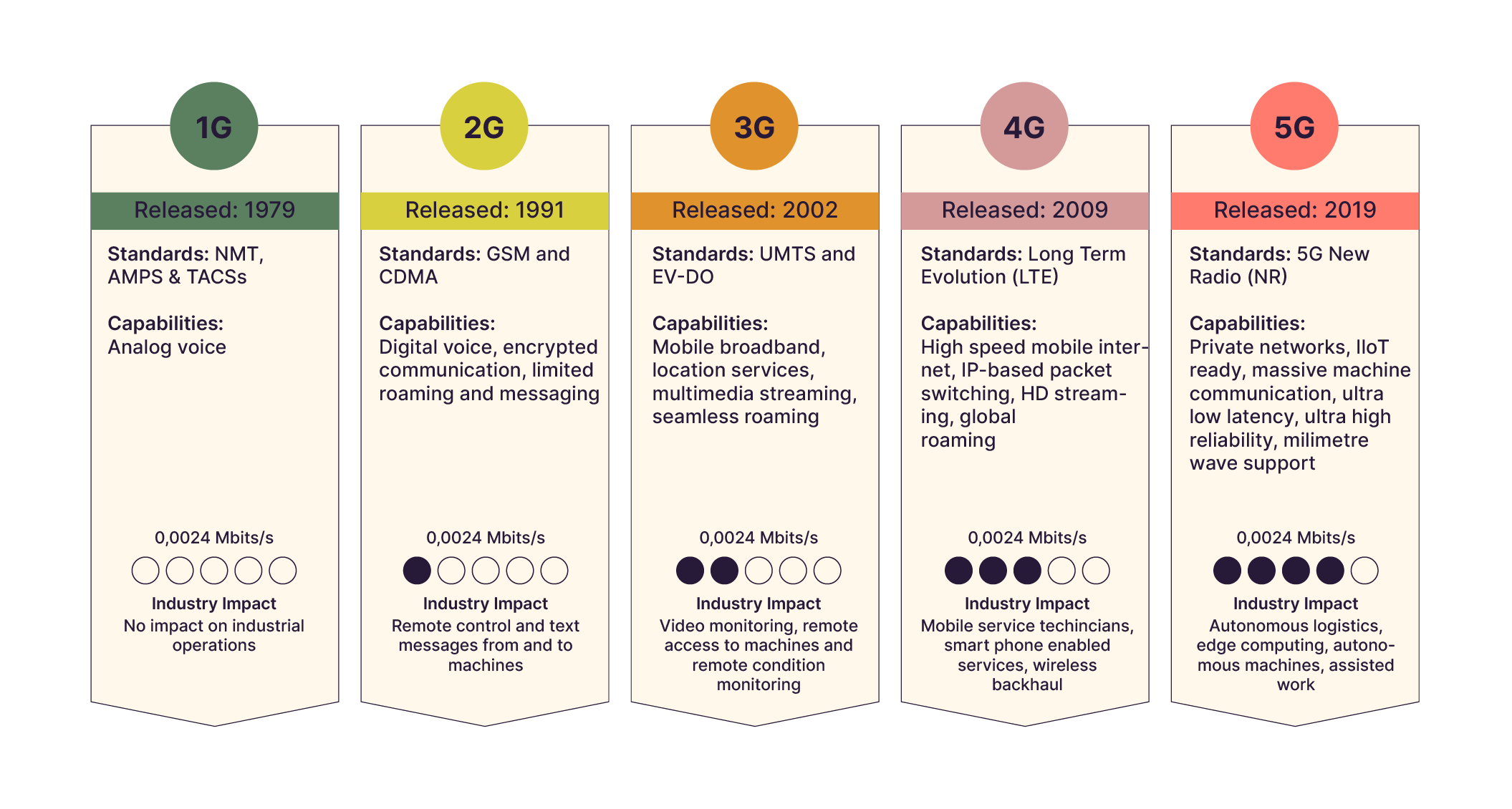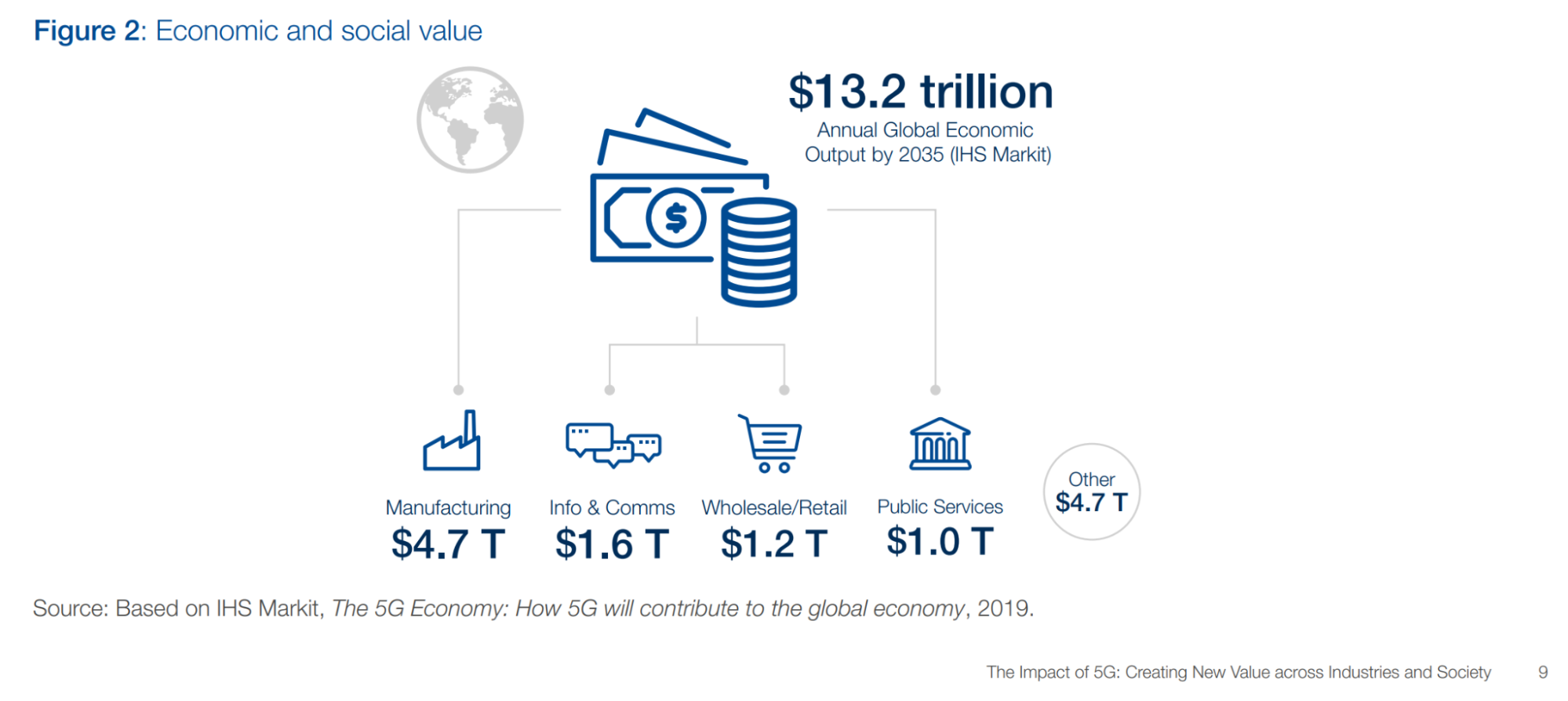
In the last chapter, we focused on AI - which relies heavily on data in its many forms.
In this chapter, we are going to take a closer look at how to capture and transmit data.
Dive Into IoT: The Internet of Things
IoT (Internet of Things) first started to reach the mainstream midway through the 2010s.
According to Matthew Evans, the IoT programme head at techUK (the UK’s technology trade association, “Simply, the Internet of Things is made up of devices – from simple sensors to smartphones and wearables – connected together.”
The range of applications for IoT devices is expanding dramatically. For every smart speaker or smart TV consumers have, IoT devices appear in clothing items, in monitoring devices (to check on the health of farm livestock), in concrete (to predict when it might be at risk of developing structural faults) - or in manufacturing production lines (to monitor quality control).
Take your pick of interesting areas of development, such as medical devices. Five years ago, a manufacturer in Switzerland started running trials of monitoring devices, about the size of a one euro coin, that could track a range of biomedical signals from patients in hospitals, providing a live stream of real-time data back to diagnostic computers, supplying an entirely new level of information about their progress.
Suppose you compare a typical post-operative ward, where a nurse spends a few minutes checking blood pressure, temperature, and pulse twice a day. In that case, this new data stream provides a much richer picture and frees nursing staff to deliver other types of care by automating the capturing of vital signs.
That shift from occasional and sparse data collection to comprehensive, real-time information flows repeatedly occurs in various situations. And we’re only just beginning to appreciate the potential.
Understand 5G
With an ever-expanding range of devices gathering more data (especially internet-connected ones), how data is transmitted and received is also worth considering.
As the world wide web became popular in the 1990s, connection to the internet was slow, expensive, and cumbersome. More often than not, it required a fixed wire connection. That created a significant barrier to extracting value.
As you’ll see in the graphic below, the first generation wireless network (around 1979) reached data transfer rates of 2.4 Kbps - kilobytes per second. While revolutionary then, it was only enough to carry only a basic voice data signal.

5G debuted in 2019. Network latency - the measure of how long it takes for a request to travel from the sender to the receiver, be processed, and then returned to the sender - is below one millisecond (one-thousandth of a second). And it can do that 99.99% of the time.
Ok, but what are the implications of this last speed and reliability boost for the industry? Why is this important?
Like electricity, wireless data bandwidth has gradually moved down the visibility axis of our Wardley maps and is something we increasingly take for granted.
However, the ability of 5G to provide a fast, robust backbone for data transfer means that all those interconnected devices can talk to each other - and those reliability promises mean they can do so with confidence, without the need for wired connections.
Now we’re talking about the ability of autonomous vehicles to exchange and process data quickly and reliably. Or to control devices conducting microsurgery wirelessly.
On an industrial level, it creates the opportunity for smart factories - sometimes called Factory 4.0. These autonomous, self-correcting manufacturing centers allow efficient and at-scale manufacturing of highly customized products. In addition, Factory 4.0 builds a capability for predictive maintenance, thanks to the collection and analysis of data continuously generated throughout the manufacturing process.
Get Familiar With the Cloud
Like AI, the idea of the cloud has passed emergence and is ubiquitous in our daily tech use. However, the cloud has been an ongoing development since the early 2000s, accelerated by faster and more stable data connections (first broadband, then 4G and 5G mobile data).
Those enablers have meant that it is no longer necessary for many computation processes to take place on-site. Still, it has been more and more convenient, not to mention economically beneficial, to use large server farms that are accessed remotely rather than building your own data centers.
The first major area to develop as cloud-based services were the software as a service (SaaS) businesses, typified by Salesforce, a tech company founded in California in 1999 and whose early tagline was “the end of software.”
Over time, the cloud has expanded in scope to offer:
IaaS - Infrastructure as a service covers the servers and data storage you might use to run your IT operations. The basic services offered by Amazon Web Services (AWS) and Microsoft Azure, among others, started as IaaS services.
PaaS - Platform as a service offers developers a shared cloud platform that adds an extra dimension through a ready-to-use cloud-hosted platform for developing, running, and maintaining applications. AWS and Azure have both moved further in this direction, incorporating an increasing array of predefined services on top of their infrastructure.
Although no longer emergent, the cloud is important in our understanding as it becomes a significant enabler of innovation. Organizations wanting to develop new applications will typically “rent” cloud services at a very low cost while they create their offering at a significantly lower price (and risk!) than having to buy the infrastructure and manage it themselves.
This democratizes innovation and makes faster development timetables with lower investment requirements possible while also providing a highly scalable route to market as demand requires.
To learn more about cloud technology, let’s check in with an expert! A cloud professional with more than 20 years of experience with different cloud technologies in different companies such as Microsoft, Oracle, and SAP, Inna Ozhogina is now working for AWS as an account manager. She helps companies to invent, innovate and transform using the full range of cloud technologies and services.
Discover Edge and In-Memory Processing
Alongside this rapidly improving data connectivity, there is another area of development to consider: the increasing importance of edge computing.
Over the early 21st century, cloud computing became a consistent theme, as large centralized data centers enabled more powerful computing over the internet, reducing costs and improving efficiencies simultaneously.
By the 2020s, the volume of data being transferred has ballooned, creating an increased cost and energy footprint. At the same time, the capabilities of the abundance of small (in particular IoT) devices connecting to each other have grown more sophisticated. And we find ourselves asking questions about how to create a lower energy footprint for reasons that aren’t just linked to the cost of powering them!
Developers of many IoT devices have chosen to use highly specialized processors where all the work occurs on the device instead of generic processors (devices that can process or compute in memory). This takes advantage of an emerging technology called tiny machine language (TinyML), which aims to improve the efficiency of deep learning AI systems by requiring less computation, fewer engineers, and less data. In other words, to do more with less.
Analyze Investment, Maturity, and Application in 5G
Let’s use the three-part analysis framework to look at the investment, maturity, and application for 5G:
Investment - It’s difficult to assess how much is being invested in the technology, because investments cover multiple areas. Reports suggested that during the first five years of the 2020s, telecommunications could spend $1.1 trillion on the infrastructure required alone.
Maturity - The first 5G networks started going live in the U.S. in 2019, so this is not developing technology. However, most questions regarding maturity concern the uses of 5G (autonomous vehicles, Factory 4.0).
Application - Billions of consumers use 5G to power their smartphones (through their contracts with telecommunications companies). However, the interesting question regarding applying 5G is about enabling capabilities for other areas of society and the economy. The four biggest sectors are predicted to be manufacturing, ICT, wholesale/retail, and public services.
The following table comes from a World Economic Forum report from 2020 outlining the expected annual economic and social value of 5G by 2035.

Your Turn
Take some time to reflect on the shift from traditional cloud computing to Edge, TinyML, IoT and what the enabling backbone of 5G might mean for the industry or your particular interests.
Can you find evidence in your own organization or among competitors investing in initiatives using these technologies?
How mature are edge computing and IoT in your industry? Are there well-established examples already?
What innovative applications of these technologies can you imagine creating value in your industry?
Let’s Recap!
The trend of the past two decades was to transfer computing processing efforts to centralized data centers.
That trend is now in reverse, thanks to the rise of rapidly increasing numbers of connected devices with increasingly powerful and specialized processing capabilities.
IoT - The Internet of Things refers to the increase of devices communicating over the internet.
5G - The fifth-generation mobile data network allows data to be transmitted quickly (10,000 Mbps) with very low latency (< 1 ms) with high reliability.
Edge computing refers to the ability of IoT devices to carry out computing in memory without needing to communicate continuously with large, centralized data centers.
We covered a lot of ground in this chapter, didn’t we? You learned a lot about the underlying technical framework of the internet as technology has accelerated in recent years. In the next chapter, we’re going to look at how that also allows a shift toward creating an internet of value exchange, thanks to Web3. Intrigued? Meet me there!
